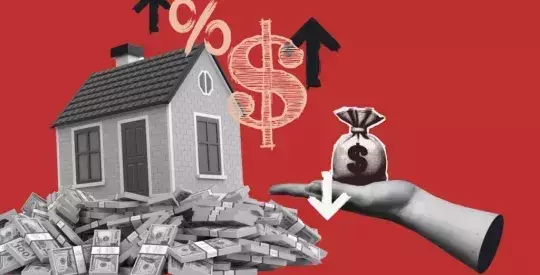
In the third quarter of 2025, down payments on homes largely held steady, as prospective buyers grappled with the dual challenges of high property values and a cooling demand. This trend, highlighted in Realtor.com's latest Down Payment Report, underscores the current state of the housing market where equilibrium is sought amidst fluctuating conditions. Despite a slight decrease in mortgage rates, the market continues to favor those with higher incomes, primarily due to the ongoing scarcity of available homes and the persistent elevation of prices. This situation implies a continued struggle for many aspiring homeowners to enter the market, leading to a concentration of purchasing power among more affluent buyers. The report further notes a substantial increase in typical down payments when compared to figures from before the pandemic, reflecting a significant shift in market dynamics over the past few years.
According to Realtor.com's analysis, the typical down payment recorded in the third quarter of 2025 was approximately $30,400. This figure represents a modest increase of about $500 from the preceding quarter and remained relatively unchanged compared to the same period in the previous year. On average, buyers continued to allocate roughly 14.4% of the purchase price towards their down payment. Historically, down payments tend to increase during the first half of the year; however, the gains observed in 2025 were notably smaller. Specifically, between the first and third quarters, the typical down payment saw an increase of only 0.5 percentage points, or $1,500. This contrasts sharply with the 0.8 percentage point and $4,000 increase recorded during the corresponding period in 2024, indicating a deceleration in the growth of down payment amounts.
Danielle Hale, chief economist at Realtor.com, remarked on the stability of down payments, linking it to the broader conditions prevalent in the housing sector. She explained that high prices and the cost of borrowing money continue to strain affordability, compelling many potential buyers to postpone their homeownership plans and consequently dampening overall sales activity. Even with mortgage rates slightly easing into the low 6% range in recent months, the persistent high prices and limited housing inventory have offered minimal relief to buyers sensitive to costs. This environment has increasingly concentrated homebuying activity among households with higher incomes. The report further emphasized that current typical down payments are significantly higher than pre-pandemic averages. For instance, the median down payment of $30,400 in the third quarter marks a 118% increase from $13,900 in 2019, far exceeding the approximately 45% rise in home prices over the same timeframe. Down payments saw a sharp rise from 2020 to 2022, driven by historically low mortgage rates and intense market competition, before stabilizing at around 14% to 15% of the total purchase price.
The current market environment is predominantly shaped by buyers with strong financial profiles. The median FICO score among homebuyers remained at 735 in the third quarter, a figure that represents the highest in over a decade and is approximately 20 points above the national average. This trend indicates that lenders are primarily approving applicants with excellent credit. Furthermore, higher-priced homes are capturing a larger share of the market. From January to July, sales of homes priced above $750,000 experienced an almost 6% increase compared to the previous year, whereas sales of less expensive homes declined by about 3%. Consequently, entry-level home purchases have lagged. Buyers of investment and vacation properties consistently made the largest down payments, averaging 26.7% and 26.9% of the purchase price, respectively. This translates to about $84,200 for investment properties and $110,100 for second homes, highlighting the significant capital involved in these segments of the market.
Regional variations in down payment trends remained considerable across the country. The Northeast region recorded the highest down payment share at 18.2%, followed by the West at 16.3%, the Midwest at 14.5%, and the South at 12.5%. Each of these regions experienced slight annual declines, with the South and West leading with a 0.6 percentage point decrease. In terms of median down payments, the Northeast saw a 5.6% year-over-year increase, reaching $62,900, while the Midwest experienced a 5.8% rise to $28,000. Conversely, the West saw a 5.6% decrease to $51,000, and the South dropped by 4.4% to $22,800. Hannah Jones, a senior economic research analyst at Realtor.com, anticipates that as mortgage rates continue to decline, there will be a greater diversity among buyers, potentially leading to smaller down payments. However, she cautioned that without a significant increase in housing inventory, renewed competition could once again exert upward pressure on both prices and down payments.
The third quarter of 2025 witnessed a stabilization in home down payments, largely influenced by the delicate balance between surging home prices and a slowdown in buyer demand. Despite the slight moderation in mortgage interest rates, the persistent high cost of homes and the limited availability of properties continue to present significant hurdles for many, thereby steering the market towards more financially robust buyers. The noticeable increase in down payment figures compared to the pre-pandemic era underscores a transformative shift in homebuying requirements. While there are regional disparities in these trends, a future easing of mortgage rates could potentially broaden market access, though the ongoing challenge of insufficient housing stock remains a critical factor that could reignite competitive pressures and drive up prices and down payments once more.
